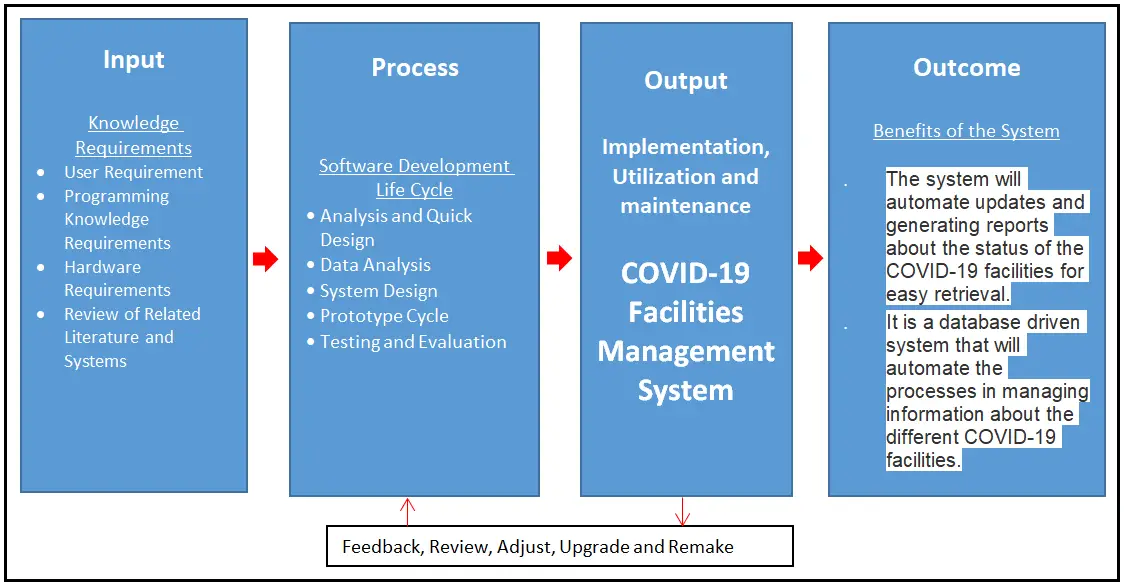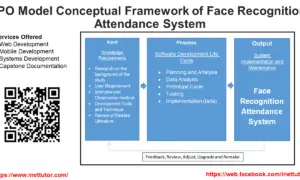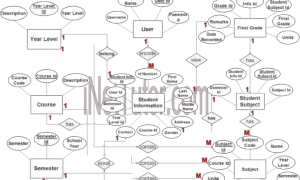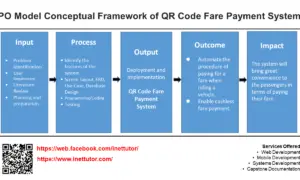COVID-19 Facilities Management System Conceptual Framework
This post will guide you on how to create a conceptual framework for the project COVID-19 Facilities Management System using input, process, and output (IPO) model.
About the Project
Table of Contents
COVID – 19 has put people in fear due to its capability of transmission when exposed to the virus. The health sectors and the government provide isolation facilities for COVID-19 patients to mitigate the spread and transmission of the virus. However, proper communication for the availability of the facilities is inefficient resulting to surge of patients in just one facility and some are transferred multiple times due to unavailability. The COVID-19 respondents must have an advance tool to manage the COVID-19 facilities where respondents can easily look for available facilities to cater more patients.
The capstone project, titled “COVID-19 Facilities Management Information System,” is a system that automates the management of the various COVID-19 facilities that the barangays provide. The system will track and manage the status and availability of the rooms so that information about where COVID-19 facilities are still available and capable of accepting COVID patients can be easily retrieved.
Role of Conceptual Framework in IT Systems Development
A conceptual framework is a set of ideas, values, and assumptions that provide guidance for understanding and solving problems. In IT systems development, conceptual frameworks are not just a set of ideas; they are the backbone of the entire process.
A conceptual framework’s primary function is to offer a comprehensive approach to comprehending and resolving issues. It offers a standard language for talking about trade-offs between various design choices and design decisions. Additionally, it gives project participants and stakeholders a shared language to communicate with.
The following are some examples of conceptual frameworks that have been used in IT systems development:
- Systems Development Lifecycle (SDLC)
- Open System Interconnection (OSI) model
- Unified Modeling Language (UML)
- And many more
Any IT system needs a conceptual framework to function properly. It offers a core framework that facilitates in directing the system’s design and deployment. Rather than being a design blueprint, a conceptual framework is a collection of concepts and guiding principles. The challenges that need to be solved, the types of solutions that will be applied, and the interactions between those solutions should all be defined by a conceptual framework.
Objectives of the Study
- To develop a system that will serve as a platform where COVID-19 facilities information was manage.
- The system will allow easy access to information about the availability of the facilities.
- The system will help in lessening difficulties encountered in searching for available facilities.
- To develop a system that is efficient and reliable to use managing different isolation facilities.
Conceptual Framework Diagram

The image above is the conceptual framework of the project entitled COVID-19 Facilities Management System. It is based on IPO model or also known as the input, process and output model.
Input
The input phase or the knowledge requirement stage consists of the following:
- User Requirement – the researchers conducted an interview with various local government unit COVID Task force to identify their needs so that the team can develop the appropriate system that will answer their existing concerns.
- Programming Knowledge – after determining the problems, a solution must be provided, and that solution is in a form of information system that will be written in the programming language where the researchers has and adequate knowledge. The researchers will use PHP, MySQL and Bootstrap for the COVID-19 Facilities Management System
- Hardware Requirements – the system cannot work alone without the hardware such as the computer and mobile devices. The researchers had explained it to the user that they need that hardware to fully utilize information system.
- Related Literature and Systems – the researchers conducted research on the different literatures and related systems to serve as a guide in the development of the COVID-19 Facilities Management System.
Process
Analysis and Quick Design
During Analysis and Quick Design, the researchers did a personal interview with the respondents and the chosen client where the study was conducted. The respondents were given the chance to suggest how the system will be designed. After conducting the data gathering, the researchers made an initial design for the proposed system.
Data Analysis
The researchers will analyze all the data, user requirements and information. This phase also help the researchers to have an idea on how to create the system and have an idea on how the proposed system would be beneficial to the clients.
System Design
The researchers will start to develop the proposed system. It includes the design; how the system would look like based on user requirements, and the researchers/programmer would like to add personal design to make the system more interactive and user friendly.
A system design phase is the process of designing a system. This includes defining what the system does, how it does it, and what components are needed to implement the design.
The COVID-19 Facilities Management System is a management system that will be used for managing facilities. The system will be designed with three phases: identification, design and implementation.
Prototype Cycle
This stage will consist of the researchers’ data being compiled, built, demonstrated, and refined. The researchers create a prototype first, based on the planned design and data tables. The prototype will be shown to the client after it has been built. The researchers demonstrate the system’s operation, the flow of how it operates, and the functions of the system’s features. The next stage is refining, in which the researchers will fine-tune the system based on the client’s extra requirements. Changes to the features flow and functionalities will be made based on the needs.
Testing and Evaluation
This will include the feed backing of the proposed system after it will be implemented and had undergone testing by three Experts. It will also inform the researchers and the developer if there are any bugs, suggestion and if the system’s functionality will work well.
This will discuss the implementation of the proposed system wherein Three (3) Experts will evaluate the proposed system. This will also discuss if the recommended functions and suggestion are met.
Output
The study’s ultimate output is an automated COVID-19 Facilities Management System that will efficiently manage COVID-19 facilities. The system’s implementation is strongly encouraged.
COVID-19 is a management system that has been designed to make the lives of facility managers easier.
This system allows facility managers to easily and quickly track their assets, plan for future maintenance, and manage their work orders. The COVID-19 system also provides analytics that are useful for tracking records of patient and other resources of the facility as well. In addition, the system provides a centralized database where all the necessary information about the building is stored. This includes the building’s history, maintenance logs, repairs, and inspections. All of this information can be accessed by authorized personnel through an easy to use interface that database project provides.
Outcome
Benefits of the System:
- The system will automate updates and generating reports about the status of the COVID-19 facilities for easy retrieval.
- It is a database driven system that will automate the processes in managing information about the different COVID-19 facilities.
Summary
The emphasis of this research is the development of the study’s conceptual framework. In this study, the researchers employed the IPO model as a foundation for building the conceptual framework. The input phase, which includes User Requirements, Programming Knowledge Requirements, Hardware Requirements, and a Review of Related Literature and Systems, is the first stage. The researchers will develop the system utilizing the Software Development Life Cycle (SDLC) technique during the process phase. The SDLC technique includes components such as analysis and quick design, data analysis, system design, prototype cycle, and testing and evaluation. The study’s ultimate goal is to create an automated COVID-19 Facilities Management System that will operate COVID-19 facilities efficiently. The implementation of the system is actively encouraged.
Readers are also interested in:
COVID-19 Facilities Information System ER Diagram
COVID-19 Facilities Management Information System Database Design
COVID-19 Facilities Management Information System Free Download
COVID-19 Capstone and Research Free Project Ideas 2022
You may visit our Facebook page for more information, inquiries, and comments. Please subscribe also to our YouTube Channel to receive free capstone projects resources and computer programming tutorials.
Hire our team to do the project.


